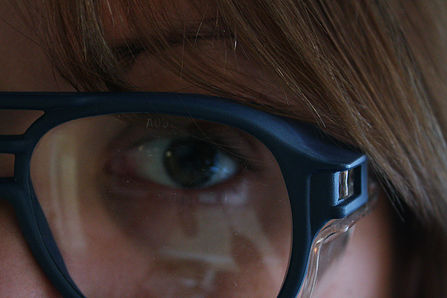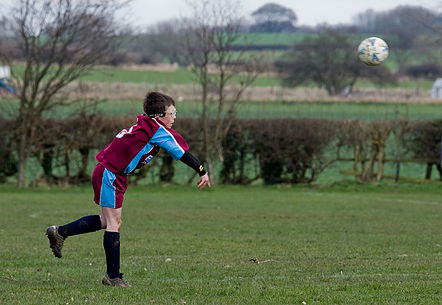
Each day, an estimated 2,000 Americans sustain job-related eye injuries that require medical treatment. Almost 90% of these eye injuries could be prevented with the proper eye safety gear and protocols.
Eye injuries can range from a minor irritation of the eye to permanent loss of vision or loss of the eye itself. Eye injuries most often occur at home, in the workplace, or while playing sports.
To help keep your eyes safe, here are some of the most common eye injuries and ways to prevent them.
Types of Eye Injuries and Prevention
- Corneal abrasion:
A corneal abrasion, or a scratched eye, is one of the most common types of eye injuries. Causes can range from environmental factors like tree branches or sand to everyday incidents like damaged contact lenses. Our independent optometrists find that the most common causes of corneal abrasions are, believe it or not, fingernails! Many new parents show up in the office with a painful corneal abrasion, which could have been prevented by keeping nails short.
Corneal abrasions are particularly common in the workplace, with an annual incidence rate of 15 per 1000 employees in U.S. autoworkers. These incidents can be prevented by wearing goggles or other protective eyewear that are appropriate for your line of work.
A scratch to the front surface of the eye can be extremely painful and lead to eye infection if left untreated. If you suspect you have a foreign particle or scratch in your eye, it is recommended you visit your optometrist right away to avoid further damage. At your exam, your eye doctor will look for symptoms such as redness or light sensitivity and determine your treatment plan, which may involve antibiotics if serious.
-
Chemical Burn:
A chemical burn is typically caused when a liquid chemical is splashed into the eye or is transferred from your hands when rubbing the eye. This type of eye injury can be a true ocular emergency and may require immediate evaluation from a doctor.
Many household products such as soap, sunscreen, and lotions have chemicals that will merely irritate the ocular surface, while acids (such as those found in car batteries) and alkalis (such as lye and ammonia, found in drain cleaners) can cause permanent damage and even blindness.
Over two-thirds of ocular burns are caused at industrial workplaces. Workers in chemical laboratories, machine factories, agriculture, and construction sites can be at higher risk for this type of eye injury.
If you work with potentially harmful chemicals on a regular basis, protective eyewear should be worn. In most labs, the Occupational Safety and Health Administration (OSHA) dictates what type of protective eyewear is necessary. 2020 On-site offers a safety eyewear program that makes it easy for employers and employees to get the right protective eyewear. Get in touch with us today to learn more.
-
Corneal / Conjunctival Foreign Body:
Corneal foreign bodies are the second most common eye injury, behind corneal abrasion. This type of eye injury happens when small pieces of metal, wood, sand or other foreign particles become embedded in the layers of the cornea or conjunctiva in the eye. Fortunately, most corneal/conjunctival foreign bodies are superficial and low-risk, although they can be very irritating.
Carpentry and industrial work, such as welding, are the most common professions where this happens. So if you work in one of these categories you should definitely be wearing the necessary protective eyewear. But it doesn’t end there: even windy weather or gardening can lead to such an eye injury. Corneal injury symptoms include eye redness, light sensitivity, excessive tearing, and blurred vision. Consult your optometrist if you notice any of these symptoms.
-
Blunt Trauma:
If you have experienced blunt trauma to the eye, your doctor may discover various eye injuries that can lead to serious (and sometimes permanent) damage. One injury is called globe rupture which may cause eye deformity, eye pain, and vision loss. Retrobulbar hematoma is another eye injury that is caused by blunt trauma and produces similar symptoms in addition to proptosis, or protrusion. Retrobulbar hematoma is a more rare eye injury, however, both require immediate ophthalmologic consultation.
Studies have found males represent about 80% of open globe injuries. The most common causes for this include car accidents, altercations, and work-related injuries that involve actions such as hammering. In pediatric patients, globe injuries are most commonly caused by objects penetrating the eye, such as scissors or writing utensils.
According to our optometrists, the more common eye complication from blunt trauma is uveitis. Uveitis is a disease that produces inflammation and destroys eye tissues, affecting the part of the eye called uvea.
Trauma is one of the most common causes for uveitis, affecting younger patients more than older. Uveitis can be painful and cause blurry vision, but it is very treatable by your doctor – so be sure to make an appointment if you have an eye injury from blunt trauma.
Blunt force trauma injuries to the eye commonly occur in sports. A finger poke, elbow, or baseball to the eye can cause significant eye injury such as iritis (inflammation), hyphema (bleeding), or orbital fractures.
To prevent eye injuries from blunt trauma, eye protection is highly recommended for certain sports activities, like racquetball or lacrosse, and for hands-on work in industries such as manufacturing or construction. If you experience blunt trauma to the eye, it’s important to see your optometrist immediately to reduce your risk of vision loss.

When should you visit an eye doctor for an eye injury?
Many eye injuries require immediate care. If you experience significant eye pain, redness, irritation, changes to vision, light sensitivity, or excessive tearing, seek professional assistance from an optometrist as soon as possible.
Some individuals seek care at emergency rooms, but this often leads to improper diagnosis and the misguided care of the patient. If an eye injury happens during business hours, it would be best to contact your local optometrist or ophthalmologist first.
If you need urgent eye care, 2020 On-site offers convenient telehealth services so you can get help faster than waiting at an urgent care facility — plus, it’s covered by your medical insurance as a doctor’s visit.
Ready to prioritize your team's eye safety? Get in touch with us today.
Sources:
http://www.allaboutvision.com/conditions/eye-injuries.htm
http://www.allaboutvision.com/safety/


